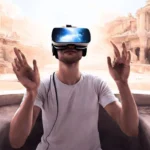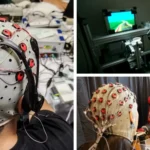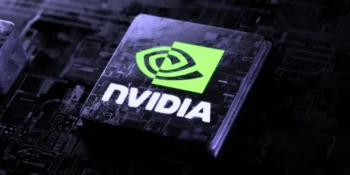Key Points:
- Next-generation brain-reading robots merge neuroscience, artificial intelligence, and robotics.
- Advanced brain-computer interface (BCI) systems enable the direct translation of human thoughts into robotic actions.
- Machine learning enhances adaptability, creating personalized brain-machine interfaces for users.
- Ethical considerations and privacy concerns underscore the need for responsible development and use.
In a glimpse into the future, researchers are paving the way for an extraordinary technological leap by unveiling next-generation brain-reading robots. The cutting-edge innovation combines advanced neuroscience, artificial intelligence, and robotics to create a symbiotic relationship between humans and machines, promising a future where our thoughts seamlessly translate into actions.
The core of this futuristic technology lies in developing highly sophisticated brain-computer interface (BCI) systems that can decode intricate neural patterns with unprecedented precision. These BCIs, seamlessly integrated with robotic platforms, enable the direct translation of human thoughts into commands that robots can execute. The result is an intuitive and natural interaction between individuals and machines, marking a paradigm shift in human-computer interfaces.
One of the remarkable aspects of these brain-reading robots is their ability to adapt and learn from the user’s neural signals over time. Through machine learning algorithms, the system becomes attuned to the unique brain activity of each individual, enhancing the accuracy and efficiency of brain-machine communication. This adaptability opens up endless possibilities for personalized and tailored applications across various domains.
The potential impact of this technology is vast, with transformative implications for healthcare, accessibility, and daily life. Individuals with mobility impairments can gain newfound independence as brain-reading robots empower them to effortlessly control assistive devices, smart homes, and even robotic exoskeletons. The technology holds promise in rehabilitation, allowing patients to regain motor functions through direct brain-controlled interfaces.
Looking ahead, brain-reading robots could redefine entertainment and gaming experiences, offering immersive virtual reality scenarios where users navigate and interact with virtual worlds using their thoughts. This futuristic vision hints at a world where the boundary between mind and machine blurs, creating unprecedented possibilities for human augmentation and enhanced cognitive abilities.
While the futuristic landscape painted by brain-reading robots is exciting, ethical considerations and privacy concerns will accompany their integration into everyday life. Striking a balance between innovation and responsible development will be crucial to ensure the future ethical use of mind-reading technology.










